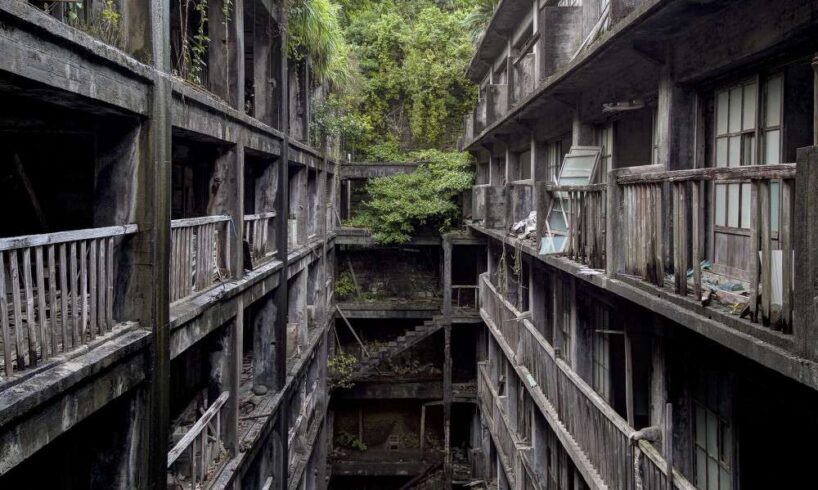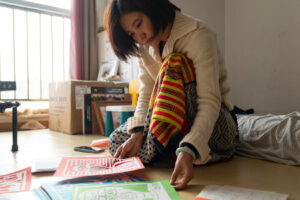
In Japan, the past tends to disappear without ceremony. Buildings are demolished, rebuilt, and modernized at a relentless pace. Space in cities is limited, and the future doesn’t wait around for anyone. Even iconic landmarks like Osaka Castle, which looks centuries old, was rebuilt in 1931, making it less than 100 years old. Frequent earthquakes, fires, and war damage have made rebuilding a constant in Japanese history.
But amid this endless march forward, one subculture quietly resists: Haikyo.
In Japanese, the word haikyo literally means ruins or abandoned buildings. But it also refers to a niche movement of urban explorers who seek out, photograph, and find beauty in these forgotten places.
While at odds with Japan’s obsession with cleanliness and renewal, Haikyo also taps into something deeply Japanese, influenced by traditional ideas like wabi-sabi, which finds beauty in imperfection and decay, and mono no aware, the gentle awareness of life’s transience. Influenced by traditional philosophies and a reverence for the past, these urban explorers look back to appreciate what remains when the world moves on.
Here, I speak to some of the most influential Haikyo explorers in Japan to understand what motivates this fascinating subculture.
Credit: Jordy Meow
Haikyo as a Portal Back in Time: An Authentic Vision of the Past
One prominent member of the Haikyo community is Jordy Meow, the founder of Haikyo.org. He has been photographing Japan’s ruins for over a decade. Arriving in Japan in 2009, he didn’t plan on becoming a Haikyo explorer; yet, once he started, it was hard to stop.
“What began as weekend adventures became something deeper. It became a way to connect to something larger than myself, real and unreal at the same time, a second life”.
He explains that for many explorers, the journey into the subculture often starts as mere thrill-seeking, but it’s not long before it develops into something much more profound.
“The initial attraction was pure adrenaline,” he says. “Jumping barbed wire, avoiding cameras, hiding from passersby. But the real hook came in an old wooden school, with tables still arranged and dusty books waiting, as if students had just left for recess decades ago. That sensation of stepping through time was unlike anything museums or films could provide.”
Credit: Jordy Meow
For Shane Thoms, author of Haikyo: The Modern Ruins of Japan, that glimpse into the past is what Haikyo is all about. “It’s a search for an authentic historical narrative,” he explains, comparing the experience of Haikyo to that of popular temples and castles on the well-worn tourist trail. “One that hasn’t been curated, sanitized, or drowned out by screaming crowds and the smell of hot dog vans.”
“In these forgotten places, I can spend silent time in contemplation, surrounded by the real scent of moss and mold and the gentle sound of water trickling through broken roofs. It’s very sensory; I want to stand in a space and feel its unfiltered story, not the version packaged for ticket sales.”
Credit Jordy Meow
Japanese Haikyo vs. Western Urbex
Globally, similar subcultures are known as urban exploration or “urbex.” While there are clear overlaps, many haikyo explorers are quick to draw distinctions between Japan and the rest of the world.
“Haikyo and Western urbex represent fundamentally different approaches,” says Meow. “I think of Japanese haikyo as a warm ember glowing in an old fireplace, while Western urbex is like nuclear reactors spitting flames.”
The types of buildings that explorers are drawn to reflect this. Meow explains that urban exploration in the West often tends toward dramatic industrial sites like disused power plants and factories, places that inspire awe and fear. In comparison, the Japanese practice of Haikyo is much quieter and more introspective.
“With Japanese haikyo, the emotion I feel most strongly is a deep sense of peace, serenity and calm,” says Thoms. “These spaces are often gentle, with interiors shaped by intention and simplicity… humble places, largely free of material possessions, carrying instead a quiet, almost spiritual presence.”
The Influence of Japanese Philosophy
The difference isn’t just in the spaces themselves, but also in how they are explored. Haikyo, as a subculture, is heavily influenced by Japanese aesthetic traditions like wabi-sabi and mono no aware. These ancient philosophies teach photographers to find beauty in the passage of time, to appreciate and admire the effects of rust, mold and weeds growing over concrete walls.
“Consciously or not,” says Thoms, “these concepts shape how I photograph [Haikyo]—not as ruins to be mourned, but as spaces that hold beauty precisely because they are fading.”
Credit: Shane Thomas
Beyond just aesthetic appreciation, Haikyo explorers also share a reverence for the lives that once existed in the ruins they photograph. Where others might chase viral locations or grand monuments, the ultimate purpose of Haikyo exploration and photography is centered around a desire to pause and dwell upon the past.
“I hope my photos spark questions about who lived there: why did they leave? What happened?” says Ghost Cornwell, who has been photographing Japan’s ruins for over a decade. “I want my images to slow people down and invite a little bit of personal reflection, both on what’s been lost and what still lingers in that space.”
Even in the most dramatic ruins—like Hashima Island, an abandoned coal-mining community off the coast of Nagasaki—this remains true. Known as Gunkanjima (Battleship Island), the island is one of the most famous ruins in Japan, famed for its distinctive, dramatic, warship-like shape. However, for Haikyo explorers, what draws them in is not just the architecture but the human stories hidden beneath the surface.
Credit: Ghost Cornwell
Gunkanjima was once home to a thriving community, replete with shops, schools and sports facilities, until changes to Japan’s coal industry led to its collapse in the 1970s. “While most see a concrete battleship or dystopian movie set, I discovered warmth in the remnants of 5,000 lives,” Meow muses. “Children’s shoes, faded photos, entire existences compressed into tiny concrete rooms.”
A Moment to Pause
In the end, Haikyo as a subculture is an attempt to reconnect with a forgotten past, an attempt to feel it before it is truly gone. “It recalls looking at photographs of people you’ve lost, or remembering connections from long ago,” says Meow.
These ruins, scattered quietly across Japan’s cities, towns, and countryside, act as fragments of history embedded within the fabric of a modern nation. And yet, many are slowly crumbling—caught between nature’s quiet reclamation and the occasional bulldozer.
“I want people to wonder about the family who gathered at that collapsed table, the child who played with that rusted toy,” says Meow. “We demolish so quickly, always rushing forward, forgetting these places held warmth, life, meaning.”
Haikyo, in its quiet way, urges us to see them before they’re gone, and to feel what they leave behind.
This article premiered in Metropolis Magazine’s Autumn 2025 Edition.
Read about why Wooden Architecture is Making a Comeback in Japan.





